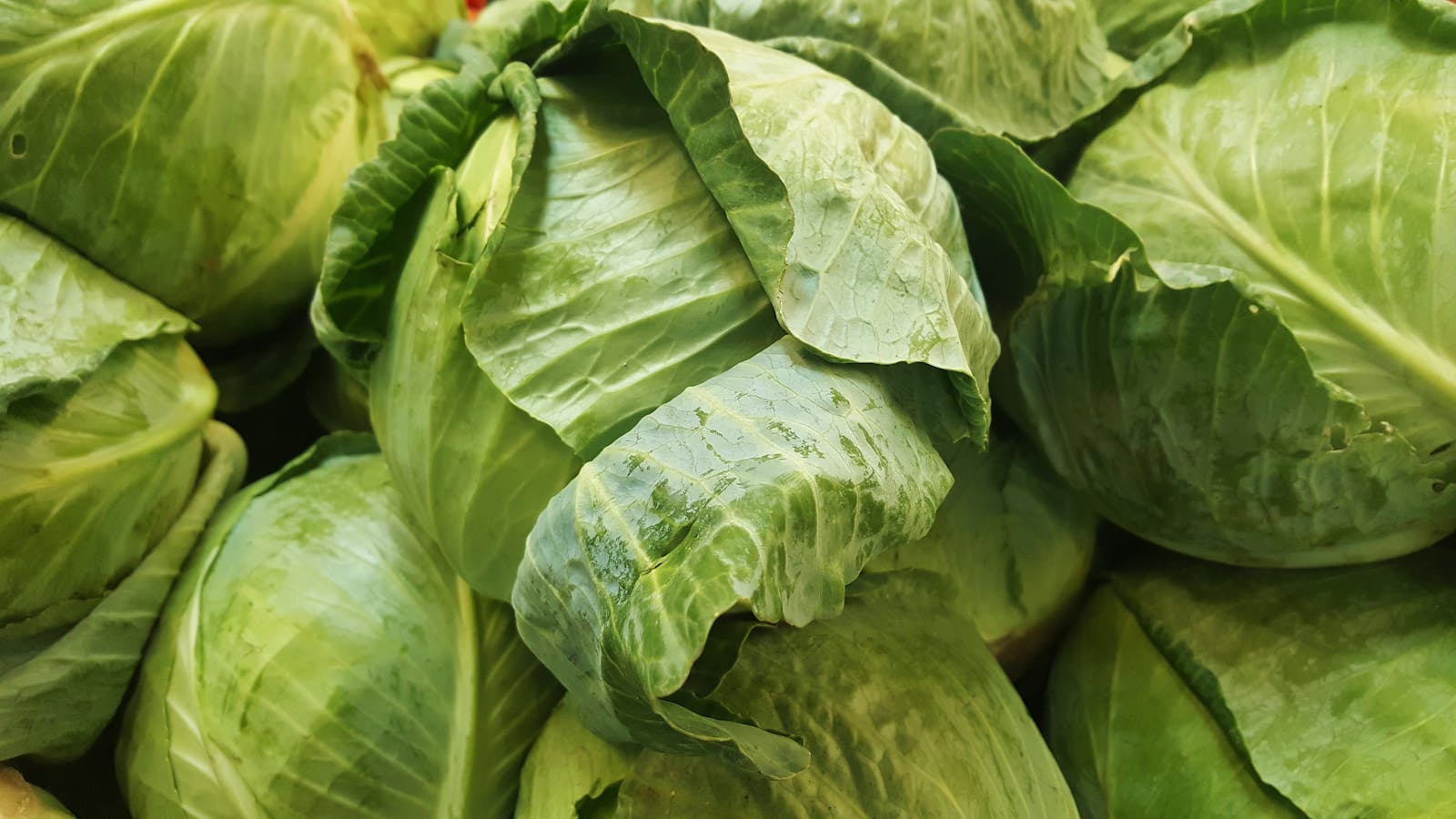A Friendly Guide for Home Composters
Yes, cabbage does break down in composting. Whether you use a classic heap, a tidy compost tumbler, or dive into vermicomposting, cabbage leaves break down just like other veggie scraps.
Turning old cabbage into rich compost not only reduces waste but also gives your garden a nutrient boost.
If you’re wondering how it all works, composting is simply nature’s way of recycling organic waste.
It matters because it cuts down on landfill use and creates healthy soil for your plants. Curious about easy ways to start?
You’ll find simple steps for tossing cabbage into your bin and tips for every compost setup—no matter your composting style.
Key Takeaways:
- Cabbage breaks down well in compost with a little help.
- Composting at home is simple, and it’s great for both the environment and your garden.
- Vermicomposting and compost tumblers can handle cabbage scraps, too.
- With the right know-how, you can safely compost cabbage and other food waste.
Ready to get your hands dirty and turn cabbage scraps into garden gold?
This guide will show you how, with practical advice anyone can follow.
For more beginner-friendly tips, check out the guide to starting composting at home.
How Composting Works and Why It Matters
Curious about what happens to cabbage and other veggie scraps once you toss them in the compost bin?
The magic of composting starts with nature’s teamwork—tiny helpers like microbes, the right amount of heat, and just enough moisture break down your food and garden waste.
This process transforms what might otherwise be trash into a gift for your garden.
Understanding how and why composting works gives you confidence that cabbage does break down in composting and lets you do your bit for a healthier planet.
The Science Behind Compost
 Photo by Quang Nguyen Vinh
Photo by Quang Nguyen Vinh
When you add cabbage to your compost, you set off a natural recycling process. Here’s how it happens:
- Microbes: These tiny living things—mostly bacteria and fungi—are the main workers. They feed on the cabbage and other scraps, breaking them down into smaller parts.
- Heat: As microbes get busy, they create heat. A well-managed compost can get as hot as a summer day, which speeds everything up.
- Moisture: Compost needs to be damp—like a wrung-out sponge. Too dry, and microbes go dormant; too wet, and you might get a soggy mess.
Cabbage is rich in nitrogen, making it a “green” material.
Microbes love breaking it down, especially when it’s chopped up.
Pairing cabbage with “browns” (like dry leaves or shredded cardboard) keeps your compost balanced and helps everything break down evenly.
Why does this matter?
Proper composting keeps waste out of landfills and returns nutrients to the soil, where they help your plants thrive.
For an easy science refresher, resources like Composting 101 cover the basics of how composting works in real life.
Key Takeaways:
- Microbes, heat, and the right amount of moisture are the team behind composting success.
- Chopped cabbage breaks down faster and gives your compost a nitrogen boost.
- Composting reduces waste and helps your garden stay healthy.
Composting Methods: Bins, Piles, Tumblers, and Vermicomposting
Not all compost setups work the same way, but each can handle cabbage and vegetable scraps.
Here’s a look at the most common methods:
Backyard Compost Piles:
- The classic garden heap. Just pile up your greens and browns in a corner.
- This method is simple, but breaking down cabbage might take a little longer—turning the pile speeds things up.
Compost Bins:
- Bins keep things tidier. They hold heat better, so cabbage decomposes faster than in an open pile.
Compost Tumblers:
- Tumblers are sealed drums you turn with a handle. This method mixes the compost and provides air for the microbes—perfect for gardeners who want quick results and less mess. Cabbage breaks down fast inside a tumbler because the heat and air circulate more evenly.
Vermicomposting:
- This method uses worms—typically red wigglers. Worms love soft, vegetable scraps (like cabbage leaves), and their castings are a powerhouse soil booster.
- Remember to avoid giving worms too much at once—they’re efficient, but even they need time to munch.
Want to find the best setup for your space and see which one might work fastest for cabbage?
Check out the guide to 6 effective composting methods—it’s packed with practical tips for every composting style.
Key Takeaways:
- Tumblers and bins break down cabbage faster than static piles.
- Vermicomposting turns cabbage into some of the best plant food you can make at home.
- Matching your composting method with your space and needs makes the process smoother.
For more tips on keeping your compost healthy year-round, swing by the composting calendar guide for seasonal tricks that keep your bin happy and productive.
Cabbage in Compost: The Breakdown Process
Cabbage belongs on your compost pile just as much as carrot tops or coffee grounds. If you’re wondering, “does cabbage break down in composting?”—the answer is a cheerful yes.
Cabbage leaves, cores, and even stalks can become part of your garden’s next boost of nutrients.
This section walks you through the best ways to compost cabbage, the science behind its decomposition, and what you can expect whether you have a backyard heap, bin, compost tumbler, or a worm bin.
Best Practices for Composting Cabbage
 Photo by Pixabay
Photo by Pixabay
Cabbage is rich in nitrogen, making it a great “green” for your compost.
That said, it can sometimes get a bit stinky or soggy if not handled thoughtfully.
Here’s how to make sure cabbage scraps turn into healthy compost with minimal fuss:
- Chop It Up
Slice cabbage leaves and cores into small pieces. This increases the surface area for microbes and worms to work their magic, speeding up decomposition. - Balance Your Greens and Browns
Since cabbage is high in nitrogen (“green”), pair it with plenty of carbon-rich “browns” like dry leaves, shredded newspaper, or straw. A good rule is one part green to three parts brown.
For more tips on balancing your compost mix and why it matters, see advice from the Can You Compost Cabbage? guide. - Check Moisture and Airflow
Cabbage wilts fast and holds water. Your compost should be moist—but not soggy. If it starts to smell like rotten eggs, that’s a sign of too much moisture or not enough air.
To fix it:- Add more browns to absorb extra water.
- Turn your pile or rotate your compost tumbler to boost airflow.
- Watch for Slime
Sometimes cabbage leaves get slimy and clump together. Mix well and add carbon sources. Turning the pile helps fight slime and smells. - Avoid Dumping Large Amounts
Adding lots of cabbage at once makes for a wet, smelly mess. Add in small batches, mixing with plenty of dry material every time.
Practical composting means keeping problem smells and pests away.
If you run into a common composting hiccup, the composting calendar guide can help you troubleshoot and stay ahead of seasonal changes.
Key takeaways:
- Chop cabbage for quicker break down.
- Balance cabbage with plenty of dry material.
- Control moisture and airflow for a healthy, sweet-smelling bin.
How Long Does Cabbage Take to Decompose?
So, how long before your cabbage scraps become garden-ready compost?
It depends on the method you choose and the conditions you keep:
-
Compost Pile or Bin
In a traditional backyard pile or bin, expect cabbage pieces to break down in 2 to 6 months. Chopping the leaves and turning the pile every week will move things along faster.
According to composters on Quora, most food scraps take a few months depending on size, moisture, and temperature. -
Compost Tumblers
Tumblers heat up quickly and get lots of air with each spin, which is a dream for microbes. Cabbage scraps in a tumbler can break down in 1 to 3 months if you keep the mix balanced and moist (but not drenched).
For a deeper dive on choosing the right composting system for your space, try the 6 effective composting methods guide. -
Vermicomposting (Worm Bins)
Worms love soft, green veggies like cabbage, but don’t overload the bin. Small, chopped pieces vanish in a few weeks to two months as worms munch through them. Feed worms small amounts at a time to avoid sour smells. -
Speeding Up Decomposition
Several factors help cabbage break down faster:- Chopping or shredding before adding.
- Regular turning or mixing.
- Keeping moisture like a wrung-out sponge.
- A balanced mix of greens (cabbage, fresh waste) and browns (dry leaves, cardboard).
On the flip side, large cabbage chunks, little airflow, or a soggy pile can slow things down.
-
According to How Long It Takes for Food Scraps to Decompose, veggies in compost break down between 5 days and one month when conditions are just right, but cabbage can be on the tougher end unless chopped and managed well.
Key takeaways:
- Cabbage scraps decompose in 1-6 months depending on your compost system and how well you manage it.
- Chopping, turning, and mixing greens and browns will give you quicker results.
- Keep compost moist but not wet, and never add huge piles of cabbage in one go.
With these tips, cabbage transforms quickly into the healthy, crumbly compost your garden will love.
If you’re ever stumped about a smelly bin or want to know what else you can compost, the composting FAQ bot has friendly advice for just about every composting question.
Troubleshooting and Common Challenges
Composting cabbage is a great way to recycle your kitchen scraps, but sometimes even something as simple as greens can bring a few hiccups to your bin.
If you’ve ever lifted the lid on your compost and were greeted by a funky smell or spotted a few too many gnats, you’re not alone.
Fortunately, with some easy steps, you can keep your compost pile running smoothly and cabbage breaks down just as well as you hope.
Preventing Compost Issues with Cabbage
Cabbage is fabulous in composting, vermicomposting, and compost tumblers, but it does ask for a bit of attention.
Its high moisture and nitrogen content mean that, if not managed carefully, it can sometimes welcome unwanted pests, sour odors, or a soggy, compact mass.
 Photo by Sippakorn Yamkasikorn
Photo by Sippakorn Yamkasikorn
Here’s how to make sure “does cabbage break down in composting?” always gets a happy “yes” without drama:
- Balance is everything.
For every handful of cabbage, add two or three handfuls of dry browns—think shredded cardboard, straw, or autumn leaves. This sets up the perfect environment for microbes. - Regular turning keeps compost lively.
Mix your pile every week or so. This fluffs things up, brings in air, and stops smelly wet pockets from developing. A compost tumbler makes this extra easy—just spin the drum a few times. - Don’t drown the pile.
Too much cabbage at once and your compost will feel like a swamp. Touch your pile: it should feel like a wrung-out sponge. If it’s soggy, toss in more dry browns. If it’s too compact, grab your garden fork or tundrum handle and fluff it up. - Keep an eye out for pests.
Cabbage can grab attention from flies or rodents, especially if it’s exposed. Always bury fresh cabbage pieces deep in your pile or mix them in well. Avoid adding cooked or rotten cabbage, as the smell is an open invitation for critters. For more tips on a pest-free setup, check out methods in how to keep pests out of your compost bin. - Odor control is simple.
If you catch a sniff of rotten eggs, your compost is begging for balance. More dry material and a good mix is the answer. Some composters even sprinkle a little baking soda now and then, as mentioned in how to reduce compost bin odors. - If your pile turns wet or slimy:
This is a classic cabbage issue. Add more browns and aerate well. Too much moisture slows everything down and makes it hard for cabbage to break down, leading to unpleasant smells. Make sure you’re not packing the bin too tight—loose piles help microbes breathe. - For worm bins:
If you use vermicomposting, go slow with cabbage. Worms love soft leaves, but a glut of cabbage can make the bin acidic and lead to trouble. Add only small amounts at a time, always mixed up with bedding or paper, and skip anything cooked or spiced.
Making your compost a pleasant, pest-free zone comes down to regular care and a balanced recipe.
Practical tips from successful composters—like those found in Can You Compost Cabbage?—recommend frequent mixing, not overloading on greens, and hiding fresh scraps under a layer of browns.
Looking for seasonal pointers to keep your compost problem-free through every type of weather?
The composting calendar tips guide is packed with advice to help your pile shine, whether it’s the middle of summer or a rainy week in spring.
Key takeaways:
- Always balance greens like cabbage with lots of dry browns.
- Turn compost weekly to boost airflow and stop smells.
- Bury new cabbage pieces deep and never overload worm bins.
- Tackle odor and pests quickly—moisture and air make all the difference.
A little care goes a long way with cabbage.
With regular turning, smart mixing, and an eye for balance, you’ll enjoy crumbly, healthy compost and a worry-free experience.
For any other troubleshooting or if a new question pops up, the friendly composting FAQ bot is always ready with instant advice, so you’re never stuck staring at a stubborn pile.
Key Takeaways and Summary
After exploring all the ways cabbage fits into home composting, you can feel good about adding those leafy leftovers to your pile.
Wondering, “does cabbage break down in composting?” The answer is a solid yes—with a few simple steps, cabbage turns into healthy, rich compost for your plants.
Whether you use a backyard pile, compost tumbler, or go the vermicomposting route, cabbage can become garden gold.
Here are the key points and a practical summary to help you compost cabbage like a pro:
Does Cabbage Break Down in Composting? The Short Answer
- Cabbage—both green and red—breaks down completely in compost.
- Chopped cabbage breaks down quicker, so slice it before tossing it in.
- Proper balance with dry materials (“browns”) keeps things from getting slimy or smelly.
You’re not alone in asking this question—many gardeners have wondered about cabbage’s place in the compost.
For another friendly take on this topic, the folks at Greenwashing Index explain how to compost cabbage and why it makes a great addition to home bins.
Key Takeaways for Easy Composting Success
Mixing cabbage into your compost is simple if you use these tried-and-true tips:
- Slice before you toss: Chop up cabbage leaves and cores first for faster breakdown.
- Always balance: Add two to three parts dry browns (like leaves, straw, or cardboard) for every handful of cabbage.
- Turn often: Mix your pile or rotate your compost tumbler weekly for best results.
- Watch moisture: Compost should be damp, but not soggy. Too much cabbage at once? Add more dry browns and fluff the pile.
- Worm bin caution: Feed worms only small amounts of cabbage at a time, paired with bedding. For a clear guide on getting started, don’t miss the home vermicomposting basics.
These keys help you avoid common problems, like odors, wet clumps, or slow breakdown.
Summary: Composting Cabbage Made Simple
- Cabbage scraps decompose in all compost systems: heaps, bins, compost tumblers, and worm bins.
- Expect it to break down in 1 to 6 months, with faster results in hot bins or tumblers.
- A good mix of greens and browns gives your compost the perfect recipe for success.
- Too much at once? Just add more browns and turn your pile.
- Composting at home turns kitchen waste into something useful and supports a more sustainable lifestyle.
Curious how to get started or need help with kitchen scraps? The kitchen waste composting guide is packed with practical info for beginners.
For more real-life tips, you can read through gardeners’ experiences on cabbage in compost forums, where home composters share what’s worked for them.

Quick FAQ
How long does cabbage take to compost?
About 1 to 6 months, depending on your method and how small you slice the pieces.
Can I compost cooked cabbage?
It’s best to compost raw cabbage only—cooked cabbage can attract pests or go slimy.
What’s the best tool for composting cabbage?
Compost tumblers, standard bins, and vermicomposting systems all work well. Pick what fits your space and style.
What if my compost smells bad after adding cabbage?
Turn your pile and add more dry browns to balance moisture and stop odors.
Where can I get more composting tips for home use?
Check out the composting FAQ bot for friendly help any time.
With a little practice, you’ll see that cabbage not only breaks down in composting—it also boosts the quality of your finished compost and helps reduce kitchen waste. Happy composting!
FAQ: Composting Cabbage and Beyond
Ready to tackle the most common and quirky questions about putting cabbage (and all sorts of veggie scraps) into your compost?
You’re in the right place. Many home gardeners wonder, “does cabbage break down in composting?”—and what else they can safely toss into their bins and tumblers.
Here’s a friendly FAQ, packed with tips that keep your composting journey smooth, successful, and surprisingly simple.
Can I Compost Cabbage and Its Core?
Absolutely—cabbage and its core break down in composting without any trouble. Both raw leaves and tougher cores are full of nitrogen, making them a “green” addition to your pile.
For best results, chop cabbage into small pieces before tossing it in.
This helps it blend in and decompose faster, whether you’re using a backyard heap, compost tumbler, or vermicomposting setup.
Chopping and mixing your cabbage prevents slimy messes and keeps the process pleasant. A compost tumbler will work even faster at breaking down those cabbage pieces thanks to regular turning.
Need more tips on handling cabbage scraps?
Dive deeper with the insights in Can You Compost Cabbage?.
Will Composting Cabbage Cause Bad Odors?
If your compost mix isn’t balanced or gets too wet, cabbage can sometimes bring unwanted smells. The trick is balancing every batch of cabbage (nitrogen-rich) with enough browns—like dry leaves and cardboard.
Turn your pile each week to let it breathe. If you notice a rotten egg smell, that’s your cue for more browns and a good mix.
Odor problems are common but easy to fix. Just remember: moisture should feel like a wrung-out sponge.
If your pile is soggy after adding cabbage, don’t be afraid to sprinkle in more browns and fluff things up.
Need troubleshooting tips for every compost season? The composting calendar guide has you covered.
Does Cooked or Pickled Cabbage Break Down in Compost?
While raw cabbage breaks down easily, cooked cabbage is best avoided. Cooking adds oils, salt, and sometimes dairy or spices, which can slow composting or attract pests.
Pickled cabbage (like sauerkraut or kimchi) contains extra salt and acidity, which can harm compost microbes and worms if added in big amounts.
If you’re curious about how salt or pickled foods behave in a compost pile, this Pickled Cabbage in Compost discussion breaks down what to expect.
Stick with raw cabbage scraps for quick, earth-friendly results.
How Much Cabbage Is Too Much for My Compost Bin?
Moderation is your friend. While cabbage does break down in composting, adding a big pile at once can clump together and make things soggy or slimy.
Always mix in two or three times as much dry, absorbent material—this keeps air flowing and speeds up the process.
Compost tumblers make mixing even easier and help you avoid common cabbage woes.
For worm bins, add cabbage in small handfuls, mixing it into the bedding so worms aren’t overwhelmed.
Overloading any system with greens, including cabbage, slows everything down and might cause odors.
For more on worm composting at home, the complete vermicomposting starter guide is a handy resource.
Is Cabbage Safe for Worm Composting (Vermicomposting)?
Cabbage is safe for vermicomposting in small amounts. Worms love soft, leafy greens, but large loads can make the worm bin too wet or acidic.
Spread out your feedings, and always blend cabbage with dry bedding like shredded cardboard for happy worms and sweet-smelling bins.
Can I Compost Cabbage in a Compost Tumbler?
Yes, compost tumblers are a fantastic way to break down cabbage quickly. Regular turning mixes greens and browns, while the enclosed space keeps things warm and tidy.
Slice cabbage into smaller pieces, add equal parts dry material, and give your tumbler a spin every few days.
What If My Compost Doesn’t Break Down Cabbage Quickly?
Sometimes cabbage takes a while to disappear, especially if you add large pieces or if the pile gets too cold or dry. The best fixes:
- Chop cabbage before composting.
- Mix and turn your pile each week.
- Add more browns if things stick together or seem slimy.
- Keep an eye on moisture—a slightly damp feel is best.
For more practical ways to speed things up, check out this community discussion where gardeners share their tricks for handling cabbage in compost: Organic Gardening: Cabbage in Compost.
What Else Can I Compost Alongside Cabbage?
Cabbage blends well with most kitchen and garden scraps. Here’s a quick list of favorites:
- Fruit and veggie peels (banana, carrot, apple)
- Coffee grounds and filters
- Eggshells (crushed)
- Small pieces of newspaper or cardboard
- Dry leaves and grass clippings
Mixing your “greens” with enough “browns” always leads to a healthy, happy compost pile.
Where Can I Get Instant Composting Answers?
If you ever have a compost puzzle, help is just a click away with the composting FAQ bot.
This tool delivers quick, friendly answers for everything from cabbage, to worms, to compost tumblers. Give it a try next time you’re stumped or just curious!
Key Takeaways:
- Yes, cabbage and its core break down well in composting—just chop and balance with browns.
- Compost tumblers and vermicomposting bins are both great for handling cabbage scraps.
- Avoid adding cooked or pickled cabbage, as salt and oils can cause trouble.
- Moderation, mixing, and moisture control are the keys to odor-free, quick decomposition.
- Compost FAQ tools and seasonal guides on Compost Charm keep you ready for any composting question.
 Photo by SHVETS production
Photo by SHVETS production
Conclusion
Cabbage absolutely breaks down in composting—whether you use a simple pile, a compost tumbler, or love the efficiency of vermicomposting.
In a matter of weeks to a few months, those leftover cabbage leaves become rich, crumbly compost that plants love.
With simple steps like chopping scraps and balancing “greens” with “browns,” you can count on cabbage turning into something wonderful for your garden instead of cluttering the bin.
Composting cabbage helps cut household waste, supports healthier soil, and makes gardening easier for everyone.
By tossing your kitchen scraps into the compost instead of the trash, you join a growing group of home composters making a real difference for the planet.
Keep the cycle going—and don’t be afraid to try composting other fruit and veggie scraps as well.
Next time you’re cleaning up after dinner, save those cabbage pieces for your compost bin or tumbler. Your plants, your garden, and the environment will thank you.
If you want to expand your composting knowledge or are ready to branch out with new scraps, the Don’t Toss It Composting Tips page is a handy resource.
And for step-by-step beginner guidance, the Start Composting at Home Guide is full of practical help.
Key takeaways:
- Cabbage is safe, effective, and easy to compost at home.
- A balanced mix and regular turning creates quick, healthy breakdown.
- Composting at home boosts your garden and the whole planet.
Cheerfully compost cabbage and all kinds of kitchen scraps.
Your garden will flourish, and you’ll help build a more sustainable world—one bin at a time. Ready to keep learning?
Dive into other Compost Charm resources for more practical tips and inspiration. Happy composting!







